How to Make Concrete Color Samples
Making colored concrete can be accomplished either by adding pigments directly to the concrete mix before casting or staining the concrete once it’s been placed. In this guide we’re going to take a close look at how to create custom colors for adding to the concrete mix prior to placement. The concrete is often referred to as “integral colored concrete” with uniform distribution of pigment throughout the entire batch of concrete.
While the pigments you choose are very important when formulating a color, many people are surprised to learn that the colors of the cements, additives, and cement replacements are equally important. Portland cement is available in both grey and white version but only the white portland cement must meet strict color standards. The grey variety can range from warm taupe to cool grey or even green. For this reason, making a custom color sample is not as simple as recording a few pigment names and proportions. You need to keep detail notes that record the concrete mix you’re using. If you’re making a mix from scratch keep track of all the materials including cement, aggregates, admixtures and cement replacements like fly-ash or csa.
What You’ll Need To Make Concrete Color Samples
- Rubber Mold or Sample Form
- Scale
- Mixing Buckets
- CHENG Countertop Pro-Formula Mix
- CHENG SmartColor Pigment
- Concrete Mix
Step 1 – Make a Sample Mold
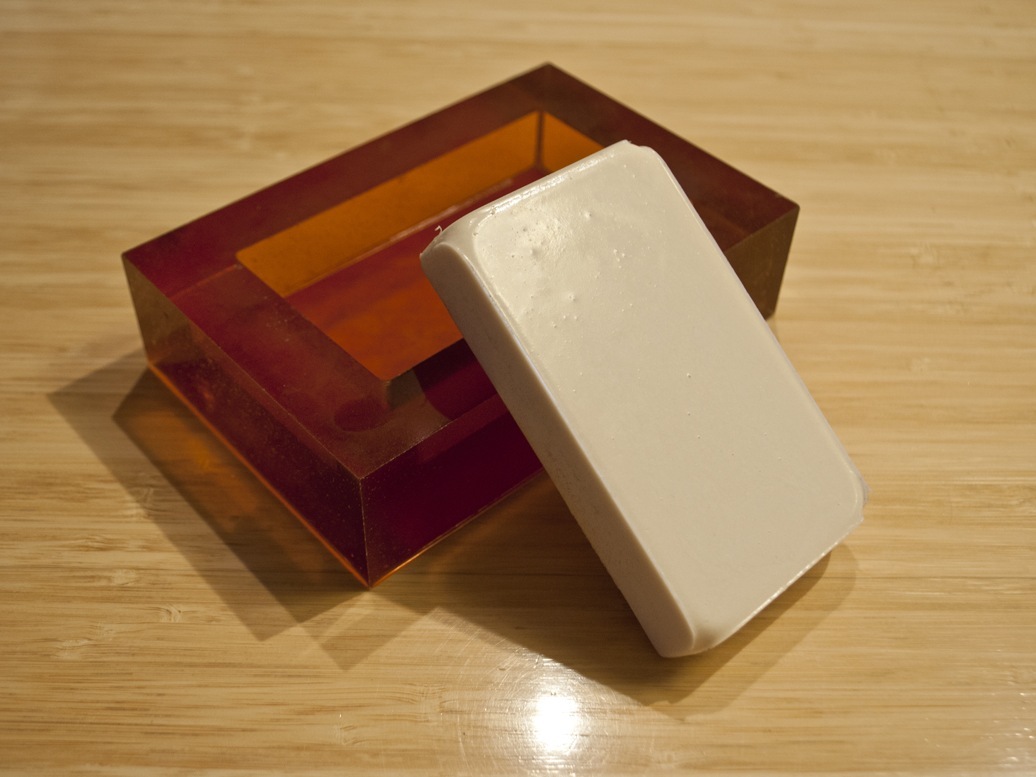
Step 2 – Custom Color Formulation
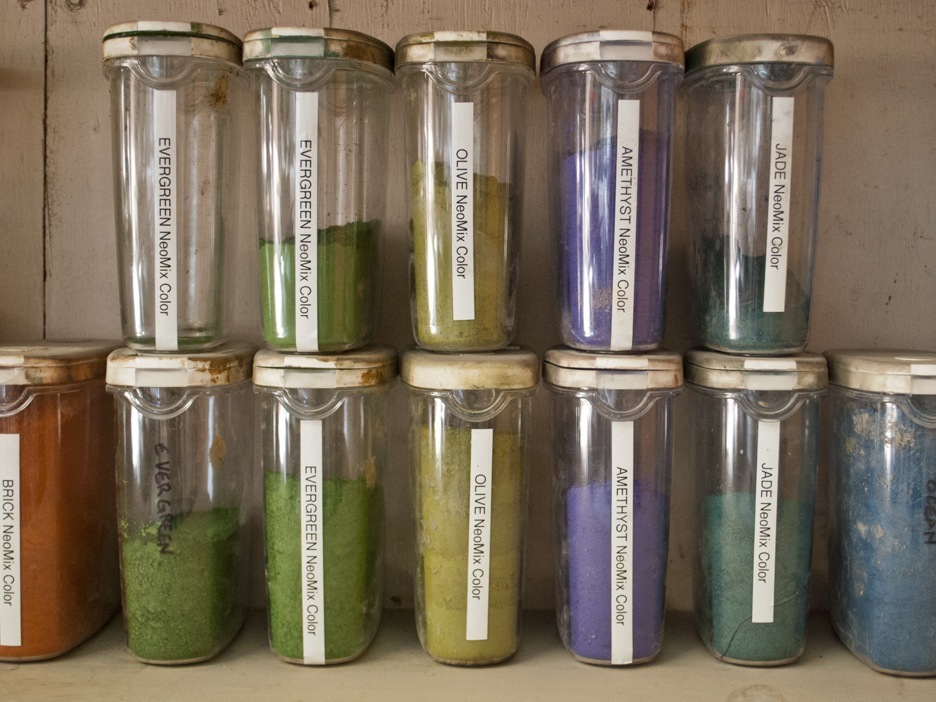
Step 3 – Mixing the Color
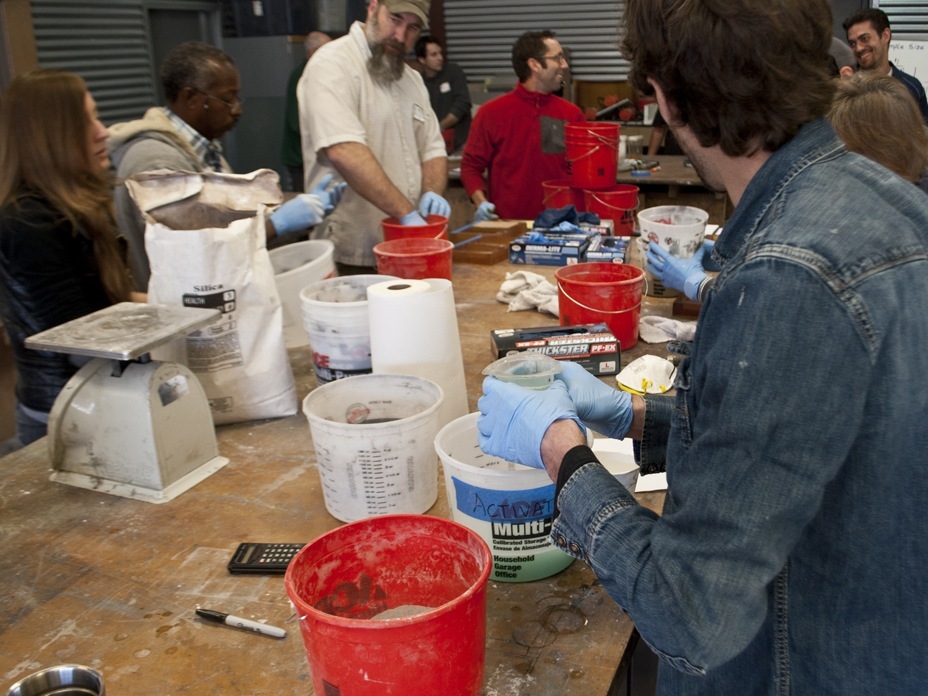
Step 4 – Pour and Vibrate Concrete
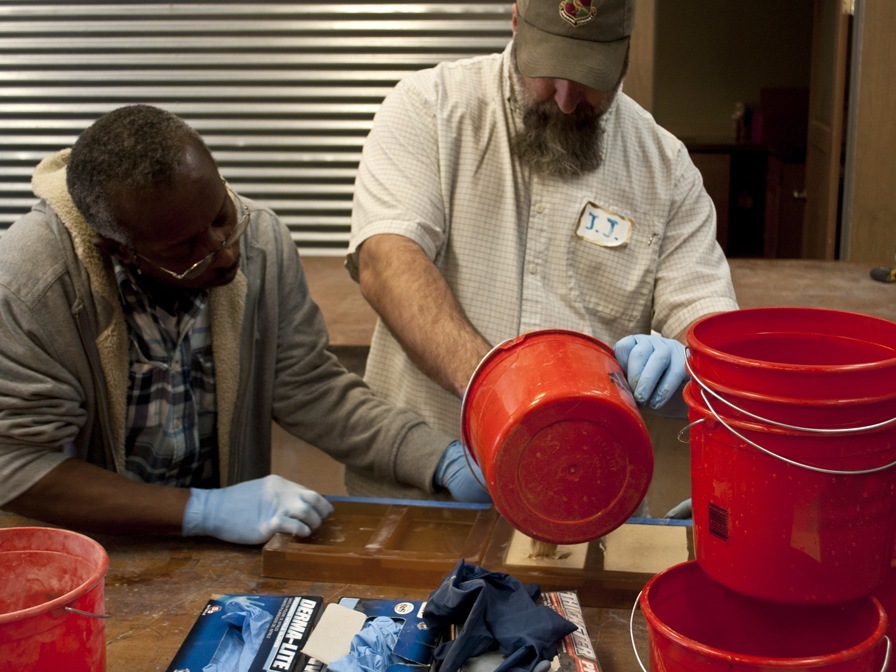
Step 5 – Taped Notes
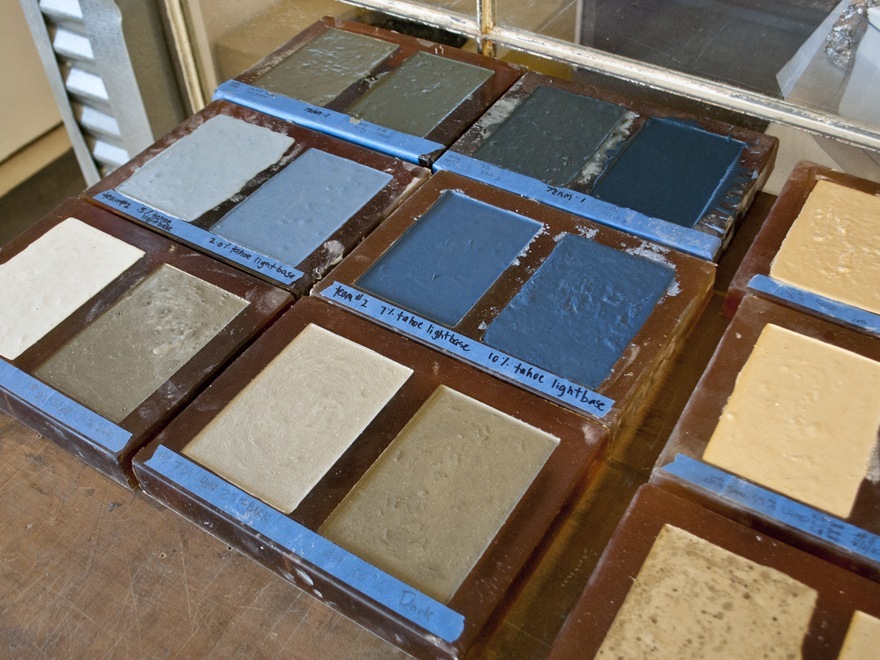
Step 6 – Cure and Demold
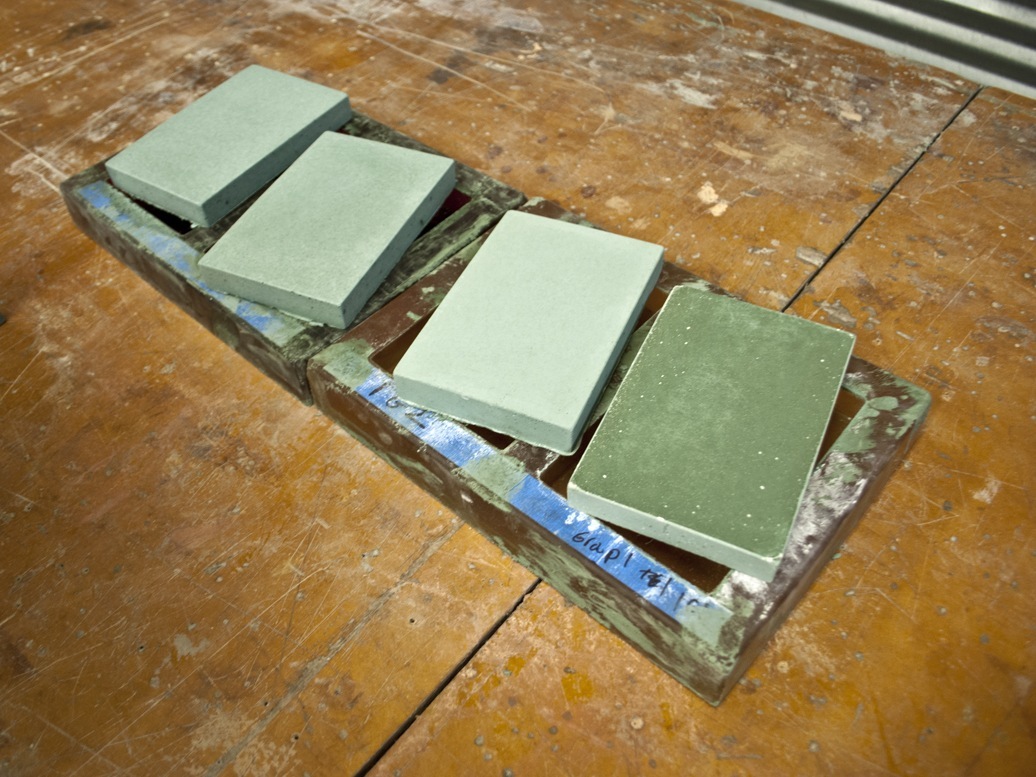
Step 7 – Polishing
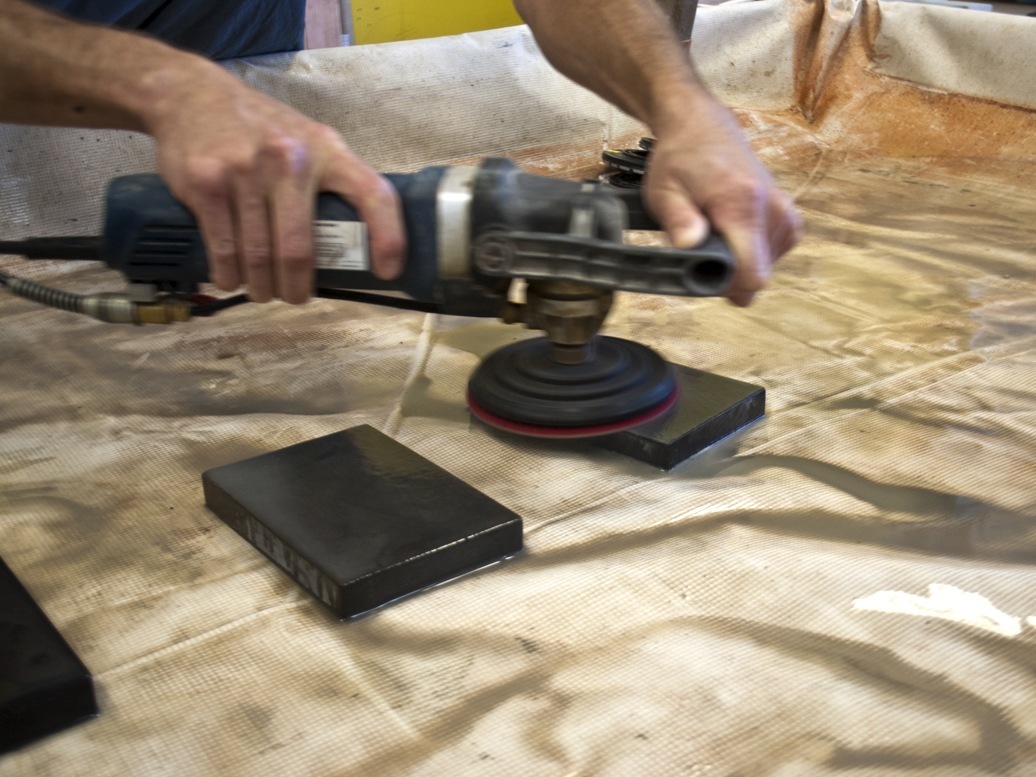
Step 8 – Library of Color Samples
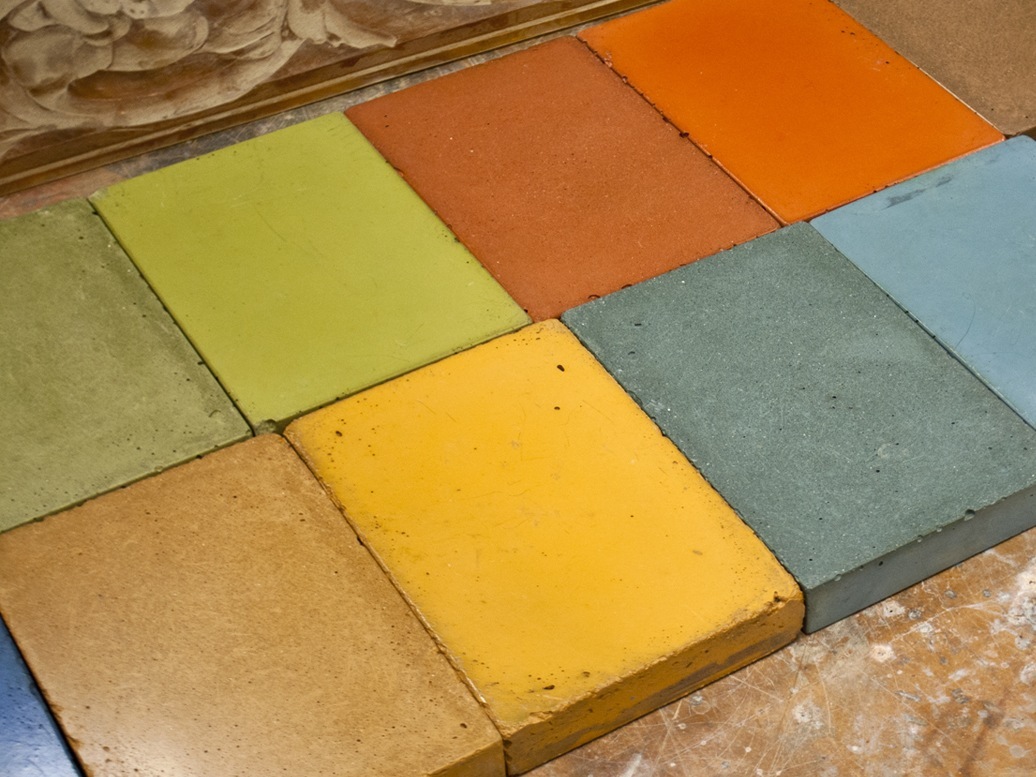
If you’re grinding the surface of the concrete the aggregate will also be an important consideration. As soon as you start grinding into the concrete you’ll expose the fine sand and then the rock aggregates. The aggregate in your concrete will vary depending on the geology of that region. If you’re planning to grind and polish your work, choose a color that looks nice with the aggregate in your area. (Charcoal concrete with white limestone aggregate doesn’t look that nice.)
There are two common types of pigments used in concrete, synthetic oxides and organics. Both are available in two forms, powder and liquid. Organic pigments will break down in UV light, making the colors fade over time. Synthetic oxides (metal rust) will fade less, and all of the pigment we use at CHENG is synthetic. Dry pigments are more economical, but care needs to be taken when using them, especially because the colors can contain elements that are harmful when inhaled. Liquid pigments are dissolved in water, so they’re easier to work with, but the added water makes them heavier and can add to the shipping cost.
Here is a list of the some common colors and the metals that are used to produce them.
White – Titanium Dioxide
Red – Iron
Blue – Cobalt
Green – Chrome
Black – Iron
Using pigments is easy, you just mix everything together, but to get consistent results, you need to know a little bit of math. Color calculations are based off of the weight of the cement (the pigmentable material). A color loading greater than 10% will weaken the concrete.
